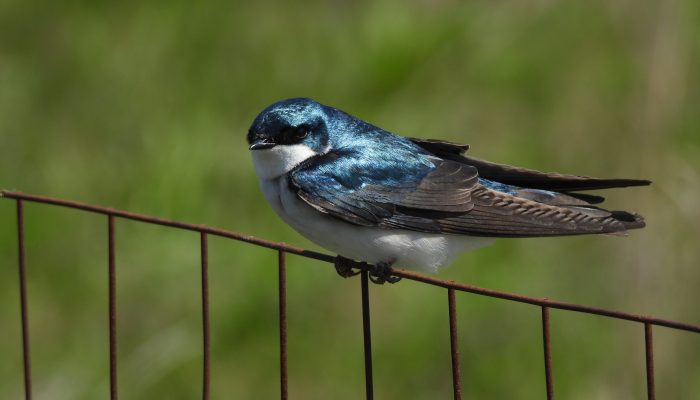By Tony Croasdale, Environmental Education Planner
The greater Philadelphia region is known for hawk-watching in the fall. Raptors, the collective term for birds of prey, tend to follow either the mountain ridges or the coast during migration. The ridges of the Piedmont, the Appalachian foothills, are also a minor migration route. Some hawks, like the broad-winged, have years where their numbers are greatest in Philly’s suburbs. Hawk Mountain in Berks County and Cape May in New Jersey may be the most famous hawk watches in the country. Just outside city limits are Militia Hill Hawk Watch in Fort Washington State Park, Rose Tree Hawk Watch in Media, and Ashland Hawk Watch in northern Delaware. But what about Philadelphia’s hawk migration?
On October 25 of last year, my buddy Dan Efroymson and I set out to find a location within our park system to observe the hawk migration. We started the day at Belmont Plateau. We saw good numbers of sharp-shinned and copper’s hawks, and some red-tailed hawks. There was enough activity to make this a worthwhile hawk-spotting location.
Our second stop was Manatawna Farm, part of Wissahickon Valley Park in Roxborough. From the access road, we observed the open sky over the farm. We saw more sharp-shinned and red-tailed hawks, plus both species of vulture and American kestrel (a small falcon). We spotted a hawk soaring with the vultures. We realized it was a Buteo, the same type of hawk as a red-tailed. The bird’s markings were not right for that species, nor red-shouldered, broad-winged, or even rough-legged hawks, the four usual species of Buteo for the region. We began to suspect that this bird was an immature Swainson’s hawk.
Swainson’s hawks breed in the grasslands of the Great Plains and valleys in the western mountains. The primary wintering grounds of this species are the Pampas grasslands of Argentina. A small population winters in southern Florida. There are yearly records of these birds from eastern hawk watches, but none from Philadelphia.
We were pretty confident about our identification. However, without a picture, we declined to make an official report. The next day, I checked Ashland Hawkwatch’s records to see if the bird passed by there. Sure enough, they had a sighting of an immature Swainson’s hawk. The photos by hawk-counter David Brown looked like our bird. We made a formal report of the bird to the Pennsylvania Ornithological Records Committee. Last week, we received word that our record was accepted, making this an official new bird for Philadelphia!




